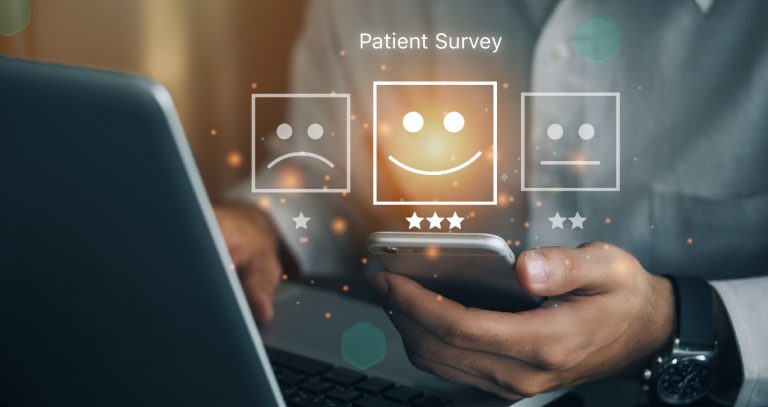Designing Effective OPD Patient Satisfaction Survey

Table Of Contents
- Introduction
- Identify What You Want To Know
- Designing The Outpatient Patient Satisfaction Questionnaire
- Determining the Channels for Feedback Collection
- Guidelines For An Effective OPD Patient Satisfaction Survey
- Categories Of Questions To Be Incorporated In The OPD Patient Satisfaction Survey
- Final Thoughts
Designing effective Outpatient Patient satisfaction surveys is a “mechanism” of actively trying to listen to your patients’ experience. While leading operational activities at some of the corporate hospitals, I have had to grapple with understanding how to design effective patient satisfaction surveys myself. Based on my learnings, I have penned down a few aspects you might want to consider.
Identify What you Want to Know
Ideally, the CXOs and the hospital operational staff should lay out the main aspects they would like to know from the patient. For example: At one hospital, the senior management wanted to capture if the patient was being made part of the care process. In another one, the CEO was keen to know how “empathetic his staff” were to his patients. This would enable the team to build a relevant framework for the questionnaire.

Designing the Outpatient Patient Satisfaction Questionnaire
Two main factors would dictate the design of the questionnaire. The first would be patient preferences, and the second would be the channels of feedback collection. Based on these parameters, you could determine how in-depth your feedback collection process could be.
Determining Patient Preferences:
Based on patient profiling in your OPD, you would be able to determine the following:
- Percentage of them are coming in for 2nd opinion consultations
- The age profile
- Educational/ professional background
- How tech-savvy the patients are etc.
The patient profile would enable you to provide the right channels to enable patients to convey their feedback honestly.
Determining the Channels for Feedback Collection:
The channels for collecting feedback could vary depending on whether you are doing it during the OP visit or after the visit.
Suggested Channels During the Visit:
- Through a PRM executive who can interact with the patient on a one-on-one basis
- Through the front office executive, providing a questionnaire
- Through a tablet PC placed at the Reception Desk or in the waiting area of the Diagnostics/the Pharmacy
- QR code readers placed at accessible locations
Suggested Channels After the visit:
- SMS
- Telephonic call with IVR facility
- E-mails

Guidelines for an effective OPD Patient Satisfaction Survey:
We have had patients who would indicate to the staff to – “please go ahead and tick the form, and we will sign on it”. This was a classic case when the patient is time-pressed, not literate, does not know English, or does not want to take the effort.
To avoid this scenario:
- Keep the number of questions limited to not more than 7 in an OPD setting
- Pick the type of question: binary, multiple-choice questions, rating scale based, etc., such that it is easy for the patient to understand and answer. For example, rating scale questions can help quantify abstract responses.
- The management should frame questions in a direct, specific, semi-formal style with a choice of words that indicates an eagerness to understand their experience. For example: Instead of asking “How do you rate our staff?”, word it more specifically as “Did you find the staff courteous and respectful?
- Allow the patient to provide feedback in their language
- Provide an e-mail address or a phone number so patients can connect immediately for any clarifications
Categories of Questions To be Incorporated in the OPD Patient Satisfaction Survey
Care Quality related Questions:
- A general question would be, how was your experience with the doctor? Or, if you want more specific feedback, you could ask questions like did the doctor spend sufficient time listening to your symptoms and explaining your ailment before suggesting the treatment plan?
- How was your experience with the nursing staff?
- Was the waiting time reasonable?
Access Issue related queries:
Here you would like to understand more about the patient experience when they have tried to communicate to the hospital for queries, information, etc. So, you can ask questions like :
- Was it easy to get an appointment?
- Did you receive the information you were looking for promptly and precisely from the website/ customer support personnel?
Staff Behavioural Issues:
This would mean how the patient is made to feel by the treatment meted out to them by the staff. Questions could include:
- Are the doctor and other staff caring and compassionate?
- Were the receptionists polite while answering queries?
- Did the doctor address your concerns calmly and professionally?
Overall Patient Experience:
It is recommended to include one question to capture the overall patient experience. This is to know if they are satisfied enough to recommend the services to others.
Final Thoughts
There is a tendency to deem the medical quality factor as more important than the access issue. However, patient perceptions stem from various subtle aspects like promptness of information provided when contacted, staff mannerisms, hygiene factors at the hospital, etc.
When not handled correctly, these factors can result in a negative impression even about the medical services. So each of the parameters needs to be considered as important. You will need to periodically iterate the questions and keep them relevant for the patient satisfaction surveys to be effective through the feedback obtained.
4Mins Read
Written By | Pooja Goerge




